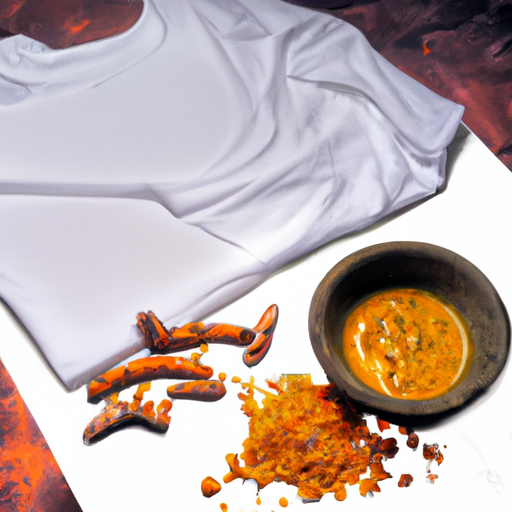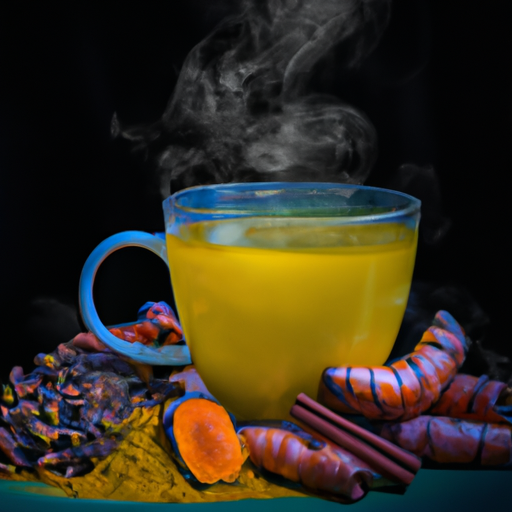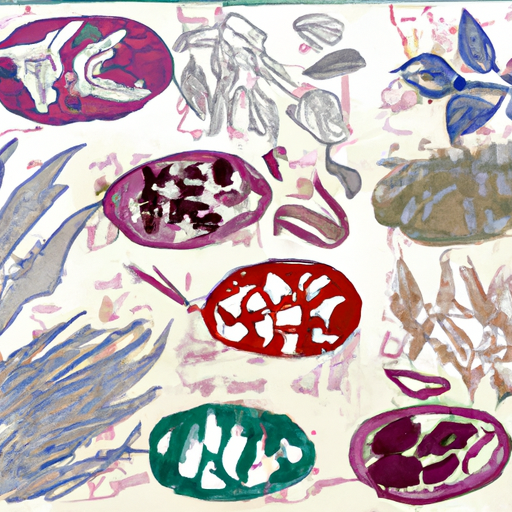Turmeric is a vibrant spice that brings a burst of color and flavor to dishes. Some may wonder if its intense hue can stain clothing, similar to how a painter’s brush can leave a lasting mark that is hard to remove.
As a personal assistant, I have been asked numerous times by my clients if turmeric can stain clothes. In this article, I will explore the science behind turmeric stains, the types of clothing most affected by them, and the best ways to prevent and treat them.
Like a ray of sunshine, turmeric’s bright yellow color is a distinguishing feature that sets it apart from other spices. However, this color can also be a source of frustration for those who have accidentally spilled it on their clothes. As someone who has experienced the annoyance of a stubborn turmeric stain, I understand the importance of knowing how to prevent and treat them.
In this article, I will delve into the chemical composition of turmeric, the properties that make it stain clothes, and the different methods for removing it from different types of fabrics. Whether you’re a cooking enthusiast or simply enjoy the occasional turmeric latte, this article will equip you with the knowledge to avoid the dreaded turmeric stain.
Key Takeaways
- Turmeric can leave difficult-to-remove stains on clothing due to its bright yellow color and curcumin’s binding properties.
- Prevention is key to avoiding stains, including wearing an apron and washing stained clothing immediately. Natural remedies like baking soda and vinegar can also be effective.
- Different fabrics require different techniques for removing stains, and hot water and heat can set stains, so spot testing cleaning solutions is important.
- Turmeric has cultural significance in India and traditional medicine. It has anti-inflammatory and antioxidant properties and is gaining attention in skincare products for its potential benefits.
Understanding Turmeric’s Color and Composition
You’ll notice that turmeric has a bright yellow-orange color, which comes from its main compound called curcumin. This compound is responsible for turmeric’s health benefits, including its anti-inflammatory and antioxidant properties. Turmeric has been used for centuries in traditional medicine and cooking, and it holds cultural significance in many parts of the world, particularly in India where it is used in religious ceremonies and as a symbol of purity.
Despite its many benefits, turmeric can also be a source of frustration when it comes to staining. The bright yellow-orange color that makes turmeric so appealing in dishes can also transfer onto clothing and other fabrics.
Understanding the science behind turmeric stains can help you prevent them and maintain the vibrancy of your clothing.
The Science Behind Turmeric Stains
If you’ve ever cooked with turmeric, you’ve probably noticed a bright yellow residue left behind on your kitchen utensils and cutting board. This yellow stain is caused by curcumin, the main active ingredient in turmeric. Curcumin is a natural pigment that gives turmeric its bright yellow color. However, this pigment can also cause stains on fabrics, especially when it comes into contact with moisture.
Here are some interesting facts about turmeric stains:
-
Turmeric stains are difficult to remove because curcumin is a lipophilic compound, which means it loves to bind with fats and oils.
-
Turmeric stains can be especially stubborn on clothes made from natural fibers like cotton, silk, and wool.
-
Turmeric’s effect on skin is well known in traditional medicine. In Ayurvedic medicine, turmeric is used to treat various skin disorders, wounds, and inflammation.
-
Turmeric’s role in traditional medicine is not limited to topical applications. It is also used internally to treat a variety of health conditions, including digestive issues, liver problems, and arthritis.
Now, let’s move on to the next section and discuss the types of clothing most affected by turmeric stains.
The Types of Clothing Most Affected by Turmeric Stains
Natural fibers such as cotton, silk, and wool are particularly susceptible to the stubborn and difficult-to-remove yellow tint caused by the active ingredient in turmeric. This is because these fabrics are porous and absorbent, making it easier for the turmeric to seep into the fibers and leave a lasting stain. Synthetic fabrics like polyester and nylon, on the other hand, are less affected by turmeric stains due to their non-porous nature.
The impact of turmeric stains on different fabric types can vary depending on the severity of the stain and the type of fabric. While some stains may be easily removed from certain fabrics, they can be nearly impossible to remove from others. Effective cleaning methods for turmeric stains include using a mixture of dish soap and vinegar, or soaking the stained fabric in a solution of baking soda and water. However, prevention is always the best course of action.
Preventing Turmeric Stains
To avoid ruining your favorite outfits, it’s important to take preventative measures when handling this vibrant spice. Turmeric stain prevention is key, and there are a few simple steps you can take to keep your clothes looking fresh and clean:
- Wear an apron or old clothes when cooking with turmeric.
- Use gloves or wash your hands immediately after handling turmeric.
- Spot test any cleaning solutions before using them on a turmeric stain.
- Wash stained clothing as soon as possible to prevent the stain from setting.
By following these steps, you can prevent turmeric stains from ruining your clothes.
However, accidents happen, and if you do end up with a turmeric stain, don’t worry. There are plenty of natural remedies for removing turmeric stains, which we’ll cover in the next section.
Treating Turmeric Stains
One effective way to deal with pesky turmeric stains is by using common household items. You can try using a mixture of equal parts baking soda and water to create a paste. Apply the paste directly onto the stained area and let it sit for 30 minutes before rinsing it off with cold water.
If the stain persists, you can also try using white vinegar. Dip a clean cloth in white vinegar and gently dab the stained area. Rinse with cold water and repeat if necessary.
In addition to these DIY stain removers, there are also natural remedies for removing turmeric stains. One option is to use lemon juice, which contains natural bleaching agents. Simply apply a few drops of lemon juice onto the stain and let it sit for 10-15 minutes before rinsing with cold water.
Another option is to use a mixture of hydrogen peroxide and dish soap. Combine equal parts hydrogen peroxide and dish soap, apply it onto the stain and let it sit for 10-15 minutes before rinsing with cold water.
With these turmeric stain prevention and removal methods, you can keep your clothes looking clean and bright.
Natural Remedies for Removing Turmeric Stains
You’re in luck because there’s a super-simple way to get rid of those stubborn turmeric stains that will have you jumping for joy! When it comes to natural home remedies for removing turmeric stains, the options are endless.
One effective method is to mix equal parts baking soda and water to create a paste. Apply the paste to the stained area and let it sit for 10-15 minutes before rinsing with cold water. Repeat if necessary.
Another natural remedy is to use vinegar. Mix 1 tablespoon of white vinegar with 1 teaspoon of dish soap and 1 cup of water. Apply the solution to the stain and let it soak for 10-15 minutes before rinsing with cold water.
Commercial products like stain removers and laundry detergents can also be effective in removing turmeric stains. However, it’s important to read the label and follow the instructions carefully.
When it comes to removing turmeric stains from specific fabrics, there are a few tips to keep in mind. For example, if you have a turmeric stain on a white cotton shirt, you can try soaking the shirt in a solution of ¼ cup of bleach and 1 gallon of water for 5-10 minutes before washing as usual. For silk or wool fabrics, it’s best to take the item to a professional cleaner.
Remember, the key is to act quickly and avoid using hot water or heat, which can set the stain.
Tips for Removing Turmeric Stains from Specific Fabrics
When it comes to removing turmeric stains from specific fabrics, there are a few tips to keep in mind. As someone who’s dealt with these stains firsthand, I’ve found that cotton is one of the easiest fabrics to work with.
Silk, on the other hand, requires a bit more care and attention. And when it comes to polyester, it’s important to act quickly and use the right techniques to avoid setting the stain.
Cotton
Hey there! If you spill turmeric on your cotton clothes, it might leave a stubborn stain that’s hard to remove. Nevertheless, turmeric and cotton have a long history together.
Besides being a potent spice, turmeric can also be used as a natural dye for cotton fabrics. The bright yellow color of turmeric can produce a range of shades, from pale yellow to deep mustard, depending on the amount of turmeric used, the duration of soaking, and the type of mordant used.
To dye cotton with turmeric, start by washing the fabric to remove any dirt or oils that may interfere with the dye. Then, prepare a dye bath by boiling water, turmeric powder, and a mordant, such as alum or vinegar. Submerge the cotton fabric in the dye bath and simmer for about an hour or until the desired shade is achieved. Afterward, rinse the fabric with cool water and hang it to dry in the shade.
However, if you accidentally stain your cotton clothes with turmeric, don’t panic. In the next section, I’ll share some effective tips to remove turmeric stains from cotton without damaging the fabric.
Transitioning to the next section about silk, if you think cotton is tricky to clean, wait until you deal with silk. Despite being a luxurious and delicate fabric, silk can also be stained easily, especially by turmeric. So, if you spill turmeric on your silk blouse or scarf, keep reading to learn how to remove turmeric stains from silk.
Silk
Silk may be a luxurious fabric, but it can be stained easily, causing frustration and disappointment. Turmeric, in particular, is notoriously difficult to remove from silk, and can leave a permanent yellow stain if not treated properly. To safely remove turmeric stains from silk, it’s important to act quickly and follow the appropriate steps.
One effective method is to mix a solution of equal parts white vinegar and water, and gently dab the stained area with a clean cloth. It’s important not to rub the stain, as this can cause damage to the delicate fibers of the silk. After dabbing the stain with the vinegar solution, rinse the area with cool water and repeat until the stain is removed. It’s important to note that using hot water or bleach can cause further damage to the silk, so it’s best to stick with gentle, natural methods when trying to remove turmeric stains. To prevent damage to silk fabric in the future, it’s best to avoid wearing silk when cooking with turmeric, or to wear protective clothing such as an apron.
Moving onto the next topic, polyester is a common fabric that is known for its durability and resistance to staining.
Polyester
If you’re looking for a fabric that can withstand everyday wear and tear, polyester is a great choice. It’s a synthetic fiber that’s known for being durable, wrinkle-resistant, and easy to care for.
However, there are some limitations to using polyester in your wardrobe. One of the biggest drawbacks of polyester is that it’s not very breathable, which can make it uncomfortable to wear in warm weather. Additionally, polyester doesn’t absorb moisture very well, so it can become hot and sticky if you sweat a lot.
If you’re not a fan of polyester, there are plenty of alternatives to consider. Natural fibers like cotton, linen, and silk are all breathable and moisture-wicking, making them great options for hot weather. You can also opt for synthetic fibers like nylon or spandex, which are often used in activewear because they offer more stretch and flexibility than polyester.
Regardless of which fabric you choose, it’s important to remember that turmeric stains can be stubborn and difficult to remove. In the next section, I’ll share some tips for dealing with these pesky stains.
Dealing with Stubborn Turmeric Stains
You’re probably staring at that stubborn turmeric stain like a detective trying to crack a case, but don’t worry, there are ways to remove it from your clothes.
Here are some quick removal tips that you can try:
-
Act fast: The longer you wait, the harder it will be to remove the stain. It’s important to act as soon as possible.
-
Use cold water: Hot water can set the stain, making it even harder to remove. Instead, use cold water to flush out as much of the stain as possible.
-
Apply vinegar solution: Mix equal parts of white vinegar and water, and apply the solution to the stain. Let it sit for a few minutes before washing it off.
-
Try a commercial stain remover: If the stain is really stubborn, you can try using a commercial stain remover. Just make sure to read the label and follow the instructions carefully.
Remember, prevention is better than cure. To avoid turmeric stains in the first place, try wearing an apron or old clothes while cooking, and be careful not to spill turmeric on your clothes.
Now that you know how to deal with turmeric stains, let’s move on to other ways to enjoy turmeric.
Other Ways to Enjoy Turmeric
I’m excited to share other ways to enjoy turmeric beyond just using it as a spice or dealing with its stubborn stains.
Firstly, turmeric can be used in cooking to add flavor and color to dishes such as curry, rice, and soups.
Secondly, turmeric supplements are increasingly popular as a natural anti-inflammatory and antioxidant, with potential health benefits for conditions such as arthritis and heart disease.
Lastly, turmeric skincare products are also gaining attention for their potential anti-inflammatory and anti-aging properties. Turmeric is a key ingredient in face masks, scrubs, and creams.
Cooking with Turmeric
Cooking with turmeric can be messy as it may leave a bright yellow stain on your clothes. However, the benefits of including this spice in your diet outweigh the potential inconvenience of staining your clothes.
Here are a few things to keep in mind when cooking with turmeric:
- Use a cutting board that you don’t mind staining. Turmeric can leave behind a yellow residue that is difficult to remove, so it’s best to use a board that you won’t need to use for other foods.
- Wear an apron or clothing that you don’t mind getting stained. If you’re worried about getting turmeric on your clothes, wearing an apron can provide a layer of protection. Alternatively, choose clothing that you don’t mind getting stained.
- Be careful when handling turmeric powder. It can be difficult to remove the yellow stain from your fingers and nails, so consider wearing gloves when handling the spice.
- Clean up spills as soon as possible. If you do spill turmeric on your clothes or countertop, clean it up as soon as possible to minimize staining.
Despite the potential for staining, cooking with turmeric can be a great way to add flavor and health benefits to your meals. Check out some turmeric recipes online to get started, and enjoy the many benefits of this versatile spice.
When it comes to incorporating turmeric into your diet, using supplements can be a convenient option.
Using Turmeric Supplements
Incorporating turmeric supplements into your daily routine can provide a convenient and enjoyable way to reap the many benefits of this versatile spice. Turmeric supplements are an excellent source of curcumin, the active ingredient that gives turmeric its renowned anti-inflammatory and antioxidant properties. These supplements can help reduce inflammation, promote heart health, improve brain function, and even aid in digestion.
However, it’s essential to note that there are also some drawbacks to using turmeric supplements. Before incorporating them into your daily regimen, it’s crucial to consult with your healthcare provider to determine the recommended dosage and frequency for your specific needs. It’s also important to keep in mind that turmeric supplements may interact with certain medications, such as blood thinners, so it’s important to be cautious and take the necessary precautions.
Despite these drawbacks, turmeric supplements can be a valuable addition to your daily routine, providing numerous health benefits. While turmeric supplements offer many health benefits, turmeric skincare products can also be a great way to incorporate this spice into your routine.
Turmeric Skincare Products
By using turmeric skincare products regularly, I’ve noticed significant improvement in the health and appearance of my skin. Turmeric, a natural anti-inflammatory and antioxidant, has been used for centuries in Ayurvedic medicine to treat various skin conditions.
Turmeric face masks and body scrubs can help to brighten and even out skin tone, reduce acne and dark spots, and provide a natural glow to the skin. Here are some benefits of using turmeric skincare products that I’ve personally experienced:
- Reduced inflammation and redness in my skin
- Improved texture and smoothness of my skin
- Diminished appearance of acne scars and dark spots
- Increased radiance and glow in my complexion
Overall, incorporating turmeric into my skincare routine has been a game-changer for my skin’s health and appearance. Whether you opt for a DIY turmeric face mask or purchase a turmeric-infused skincare product, the natural benefits of this spice are worth exploring.
Frequently Asked Questions
What are some alternative uses for turmeric besides cooking?
As someone interested in DIY beauty and natural remedies, I’ve discovered that turmeric has many alternative uses beyond cooking. It can be used as a face mask, teeth whitener, and to soothe inflammation.
Can turmeric stains be harmful to skin or health?
Like with any substance, turmeric stains can cause skin concerns if left on for too long. Ingestion risks are low, but caution should be taken with high doses. Always consult a healthcare professional for personalized advice.
How long does it typically take for a turmeric stain to set in?
Turmeric stains set in quickly, so it’s important to act fast. Prevention tips include wearing protective clothing and avoiding contact with turmeric altogether. For natural stain removers, try lemon juice or white vinegar mixed with baking soda.
Are there any clothing materials that are immune to turmeric stains?
Turmeric resistant fabrics do exist, but no material is immune. To prevent stains, apply a mixture of dish soap and cold water to the affected area immediately. Avoid hot water and rubbing the stain, which can make it worse.
Is it possible to completely remove a turmeric stain from clothing?
Completely removing a turmeric stain from clothing requires prompt attention and the use of effective turmeric stain removal techniques, such as applying a paste of baking soda and water. Additionally, using laundry detergents specially formulated for removing turmeric stains can help.
Conclusion
In conclusion, turmeric is a powerful spice that can add flavor and color to any dish. However, it can also be a nuisance when it comes to staining clothes. Understanding the science behind turmeric stains and the types of fabrics most affected by them is crucial in preventing and treating these stains.
By taking preventative measures such as wearing an apron or treating the stain immediately, one can greatly reduce the likelihood of a turmeric stain ruining their clothes. In the event that a stain does occur, natural remedies such as lemon juice and baking soda can be used to effectively remove it. It’s important to note that different fabrics require different treatment methods, so it’s important to research and follow specific guidelines.
While dealing with stubborn turmeric stains can be frustrating, it’s important to remember the many benefits of this spice. Incorporating turmeric into your diet can provide numerous health benefits and there are also non-culinary ways to enjoy it such as in skincare products or as a natural dye for fabrics.
With the right knowledge and approach, turmeric stains can be easily managed, allowing you to fully enjoy all that this powerful spice has to offer.










